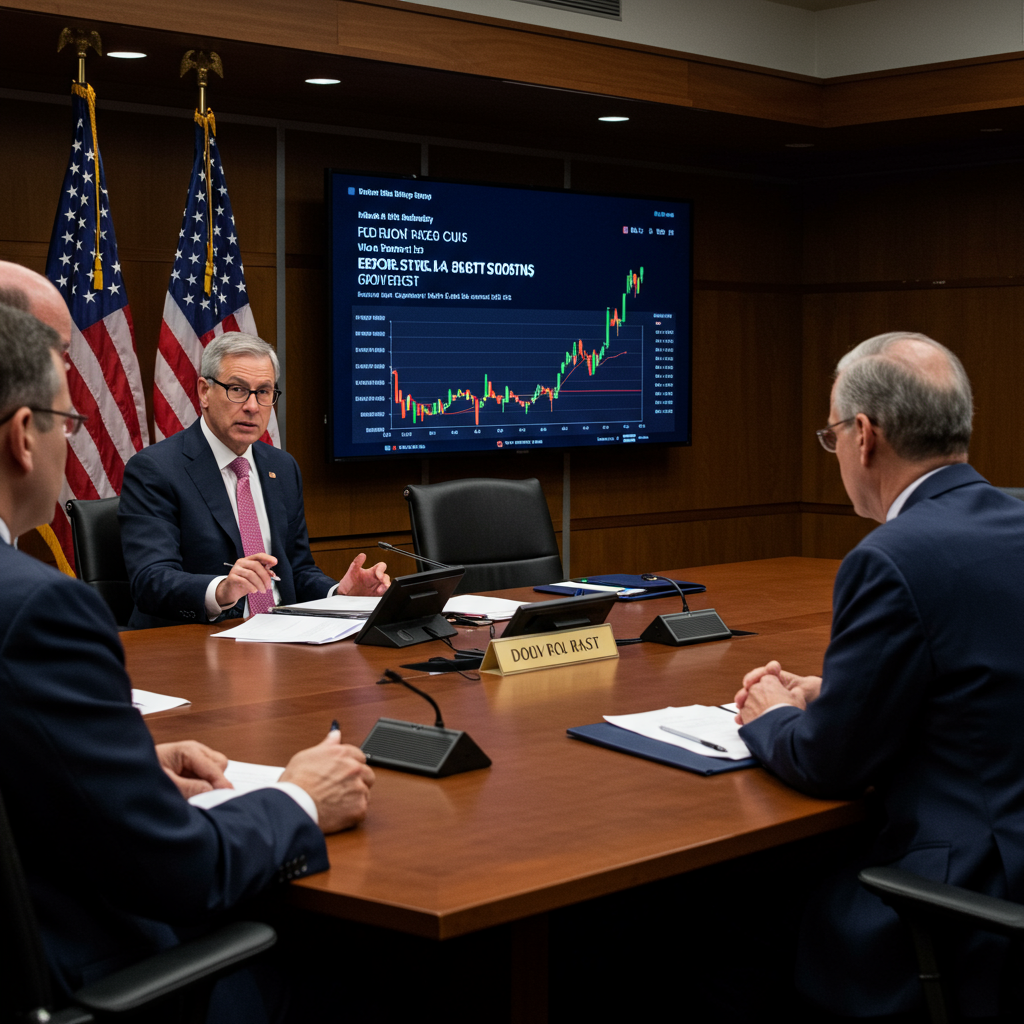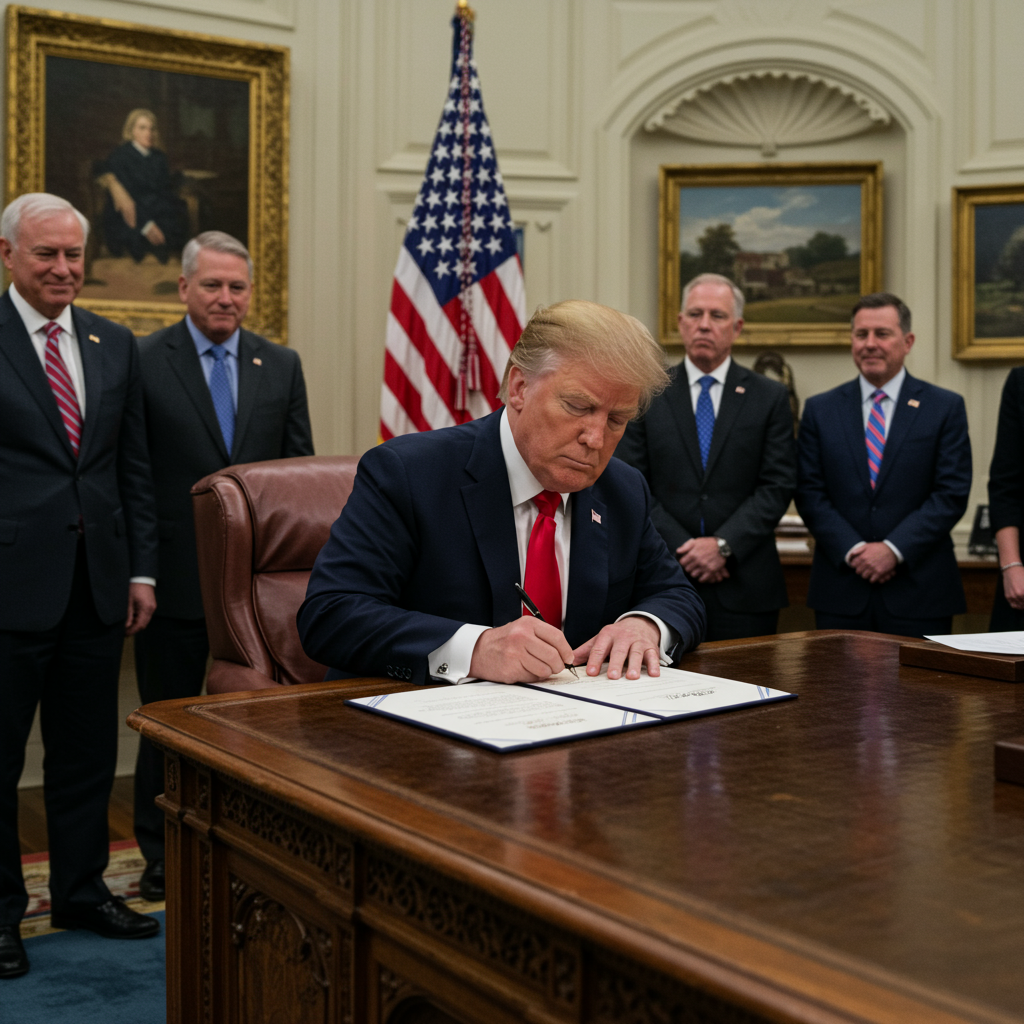A recent Federal Reserve interest rate cut, while seemingly a unified decision, often masks significant internal dissent among policymakers regarding the future path of monetary strategy. Understanding these underlying disagreements is crucial for investors, businesses, and consumers to accurately gauge economic direction. This in-depth analysis explores why such divisions emerge, their potential impact on market stability, and how to interpret the Fed’s signals amidst differing viewpoints.
Unpacking the Fed’s Dilemma: More Than Just a Number
When the Federal Reserve announces an interest rate adjustment, the headline often suggests a consensus. However, the process is far more nuanced. Decisions by the Federal Open Market Committee (FOMC) are the result of intense debate. A rate cut, for example, might be agreed upon for immediate relief. Yet, the long-term outlook can reveal deep cracks in policy alignment. This hidden divergence can significantly influence future economic stability and market sentiment. It’s essential to look beyond the immediate action.
The Immediate Impact of a Rate Cut
A central bank rate cut typically aims to stimulate economic activity. Lower borrowing costs encourage spending and investment. This can boost employment and avert a slowdown. Markets often react positively to such a move. It signals the Fed’s commitment to supporting growth. However, the reasoning behind the cut can differ widely. Some policymakers might view it as a proactive measure. Others might see it as a necessary evil.
Beneath the Surface: The Nature of Internal Disagreement
Internal differences within the Fed are not uncommon. They stem from varying economic forecasts and policy philosophies. Some members might prioritize inflation control. Others could focus more on maximizing employment. These diverse perspectives lead to robust debates. A rate cut might represent a compromise. It often satisfies neither extreme viewpoint entirely. The decision then serves as a temporary truce.
The Core Fault Lines: Where Policy Views Diverge
The Federal Reserve’s dual mandate requires balancing price stability and maximum employment. This often creates inherent tension. When economic data presents mixed signals, disagreements become more pronounced. Policymakers interpret the same data differently. Their outlooks on future inflation, growth, and unemployment vary. These differing views form the “fault lines” of monetary policy.
Inflation Targets vs. Employment Mandate
Some Fed officials may lean “hawkish.” They prioritize keeping inflation in check. They might argue against rate cuts if inflation risks seem elevated. Others are “dovish,” focusing on bolstering job growth. They might advocate for more aggressive rate reductions. This fundamental ideological split is a constant presence. It shapes every major policy discussion. The path forward is rarely clear-cut.
Economic Outlook: Growth Trajectories and Risks
Forecasting the economy is an inexact science. FOMC members each come with their own models and biases. One group might foresee robust growth. They may worry about overheating and future inflation. Another might anticipate a slowdown. They would then push for supportive policies. These divergent growth outlooks directly impact rate decisions. They also influence the Fed’s forward guidance. Market participants closely watch these varying projections.
Forward Guidance and Market Expectations
The Fed uses forward guidance to communicate its future policy intentions. This guidance aims to manage market expectations. However, internal disagreements can complicate this communication. A unified message becomes challenging. If market participants perceive conflicting signals, uncertainty rises. This can lead to increased volatility. Clarity in communication is paramount for market stability. Any hint of division can ripple through global financial systems.
Why Internal Dissent Matters for Markets and Main Street
Internal disagreements within the Federal Reserve are not just academic debates. They have tangible consequences. They influence everything from stock market performance to everyday lending rates. A lack of clear consensus can erode confidence. This uncertainty often translates into real economic effects. Understanding these dynamics is key to navigating financial landscapes.
Investor Uncertainty and Volatility
Markets thrive on predictability. When the Fed’s internal stance is fragmented, future policy becomes less clear. This uncertainty makes investors hesitant. They may delay investment decisions. This can lead to increased market volatility. Stock prices can fluctuate wildly. Bond yields may become unpredictable. Investors constantly seek clues about the Fed’s future moves. Signs of division create anxiety.
Impact on Business Investment and Consumer Confidence
Businesses also value policy stability. Clear signals from the Fed allow for better long-term planning. If the policy outlook is hazy, businesses might postpone capital expenditures. They could delay hiring new staff. Similarly, consumers might become more cautious. They might save more and spend less. This can dampen economic growth. The impact extends far beyond financial headlines.
The Challenge of Unified Communication
The Fed’s credibility hinges on its ability to communicate effectively. A unified front projects strength and resolve. When there are significant internal differences, crafting a cohesive message is difficult. The market may try to “read between the lines.” This can lead to misinterpretations. Maintaining public trust in monetary policy requires clear, consistent communication. Dissent complicates this delicate balance.
Navigating the Nuances: How to Interpret Fed Signals
Given the potential for internal division, how can one effectively understand the Fed’s true direction? It requires looking beyond the immediate announcements. Observers must delve into various official documents and public statements. This deeper dive reveals the underlying currents of policy thought. It provides a more complete picture of the Fed’s path.
Reading Between the “Dot Plots” and Meeting Minutes
The “dot plot” shows individual FOMC members’ interest rate projections. These dots often spread widely, revealing significant disagreements. Meeting minutes, released weeks later, offer detailed insights into discussions. They record the nuances of debate. They often highlight specific arguments for and against certain policy stances. These documents are invaluable for discerning internal sentiment. They help clarify where policymakers stand.
Beyond the Headlines: Focusing on Key Speeches
Many Fed officials deliver public speeches and interviews. These platforms allow individual members to articulate their views. Paying attention to these diverse perspectives is crucial. Identifying who holds “hawkish” versus “dovish” views helps predict future policy shifts. These individual statements often offer more detail than official press conferences. They provide a window into the prevailing opinions within the committee.
Looking Ahead: The Future of Fed Policy Amidst Division
The Federal Reserve operates in a dynamic economic environment. Internal divisions are a natural part of its deliberative process. The challenge lies in managing these differences effectively. The Fed must still deliver coherent policy decisions. Its future actions will depend on evolving data and the ability to forge consensus. Navigating these complexities is central to its mandate.
Potential Scenarios for Policy Evolution
If internal disagreements persist, several scenarios could unfold. The Fed might adopt a more cautious, data-dependent approach. This could mean smaller, incremental policy changes. Alternatively, one faction might gain dominance. This would lead to a more decisive shift in direction. The outcome depends heavily on economic performance. It also relies on leadership’s ability to unite disparate voices.
The Role of Evolving Economic Data
Ultimately, economic data often acts as a powerful unifier. Clear signals on inflation, employment, or growth can push policymakers towards a common understanding. Strong data might justify a continued hawkish stance. Weak data could strengthen the dovish argument. The Fed’s decisions are always a response to the current economic reality. However, the interpretation of that reality can still vary.
Frequently Asked Questions
What does internal dissent within the Fed signify for the economy?
Internal dissent within the Federal Reserve indicates varying opinions among policymakers about economic outlooks and the appropriate monetary policy response. This can signal uncertainty regarding future interest rate paths, inflation trends, and employment growth. While a consensus decision like a rate cut might be announced, underlying disagreements can lead to unpredictable future policy shifts, potentially causing market volatility and making long-term economic planning more challenging for businesses and consumers.
How can observers track Federal Reserve policy disagreements?
Observers can track Fed policy disagreements by carefully analyzing several key sources. The “dot plot,” released quarterly, illustrates individual FOMC members’ interest rate projections, often revealing a wide range of views. Detailed meeting minutes, released three weeks after FOMC meetings, provide narrative accounts of policy debates. Additionally, public speeches and testimonies from various Fed governors and regional bank presidents offer insights into their personal economic philosophies and policy preferences.
Should investors adjust their strategies based on Fed internal divisions?
Yes, investors should consider Fed internal divisions when formulating their strategies. Significant disagreements can lead to increased market uncertainty and volatility, as the future direction of monetary policy becomes less clear. Investors might adopt more conservative positions, diversify portfolios, or focus on assets less sensitive to interest rate fluctuations. Understanding these divisions allows for a more informed assessment of risk and opportunity, helping to anticipate potential policy shifts and their market impact, rather than solely reacting to headline announcements.
Conclusion
A Federal Reserve rate cut, while seemingly a straightforward economic action, often represents a delicate balancing act. It can effectively mask profound internal disagreements about the optimal course for future monetary policy. These divisions, rooted in differing economic outlooks and mandates, hold significant implications for market stability, business confidence, and overall economic health. By understanding the nuances behind these decisions—delving into meeting minutes, dot plots, and individual speeches—stakeholders can gain a clearer perspective on the Fed’s true intentions and better navigate the evolving economic landscape. Staying informed about these underlying currents is paramount for making sound financial decisions.




